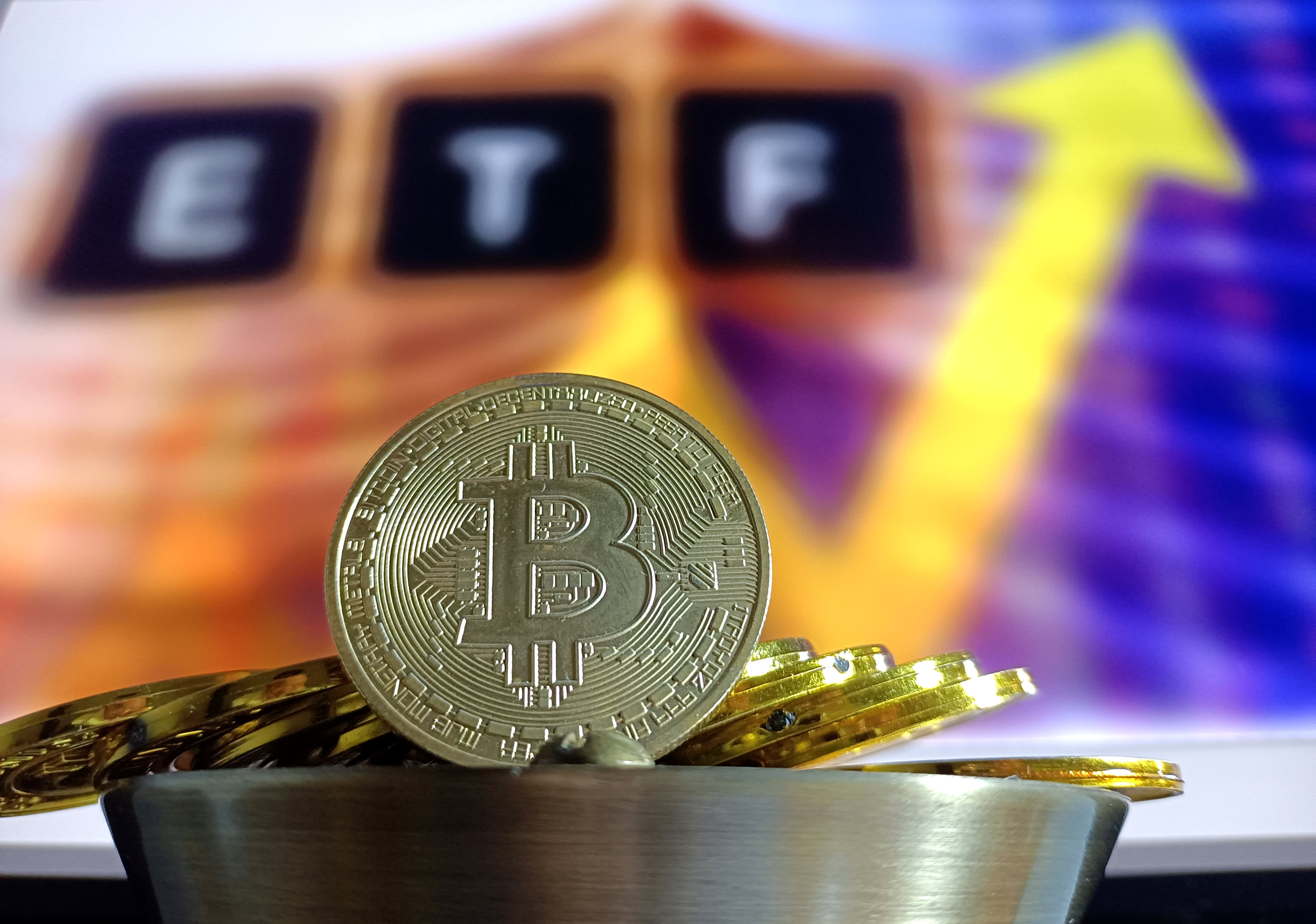
CFOTO | Future Publishing | Getty Images
Bitcoin ETFs rose on their first day of trading on Thursday, moving higher along with crypto prices more broadly.
In early trading, the Grayscale Bitcoin Trust (GBTC) rose nearly 6%, while the iShares Bitcoin Trust (IBIT) jumped more than 4%. Both funds saw millions of shares of trading volume within the first 10 minutes of the trading session.
Those two are among the first of as many as 11 funds that are expected to trade on Thursday.
Bitcoin ETFs on Thursday
The Grayscale fund is the biggest of the group, as it was converted from an over-the-counter trust that already had more than $28 billion in assets. The Hashdex fund is a strategy change from an existing bitcoin futures ETF, and SEC filings that the change had not yet taken account as of Thursday morning.
The moves for the funds came as bitcoin jumped more than 6% on the day, according to CoinMetrics. Bitcoin trades around the clock, so the first day moves for the funds could be impacted by the exact timing of their launch.
Investors and financial advisors will be watching closely to see not only how the bitcoin ETFs perform, but also how well they track the price of bitcoin. Wide gaps between the price of a fund and the price of the underlying bitcoin that lasts for multiple days could be a sign of thin trading or structural issues with an ETF and scare off potential buyers, even if the fund is temporarily outperforming spot bitcoin.
Trading volume will also be a key metric for investors, as funds with more trading are seen as more efficient.

